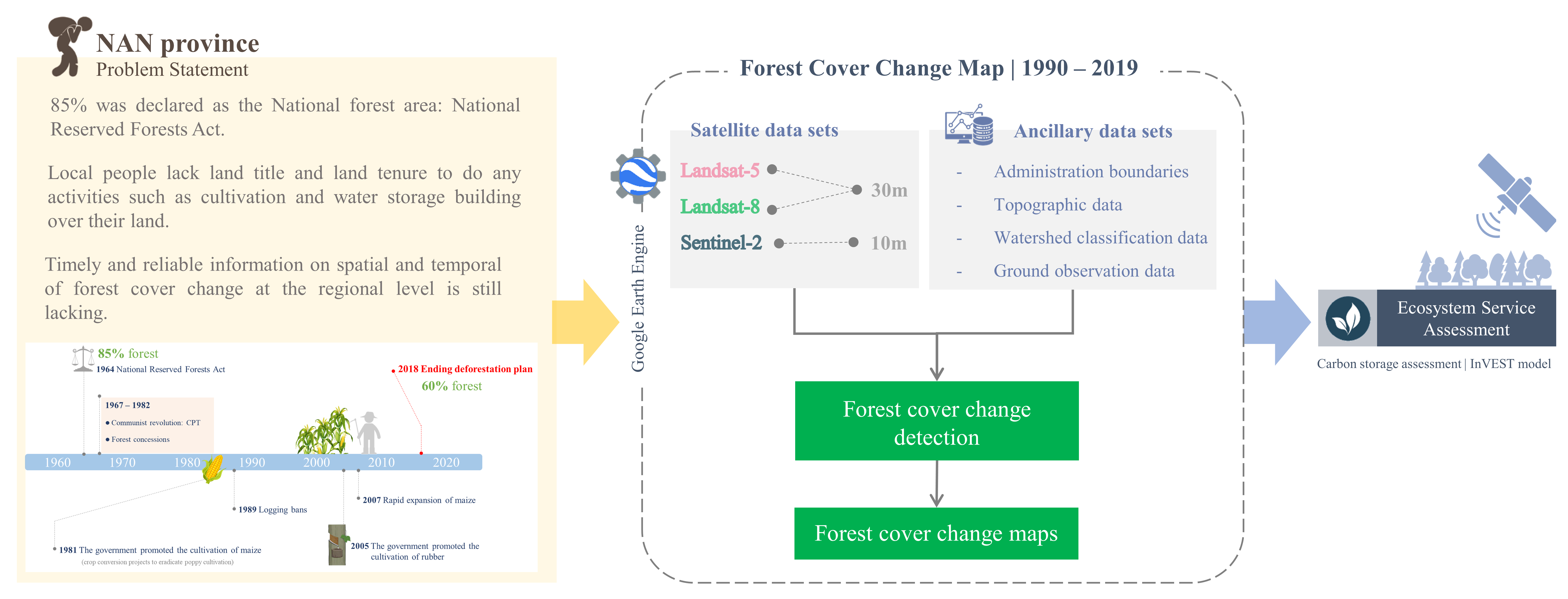Unveiling Long-term Impacts of Forest Cover Changes and Carbon Storage Assessment in Nan Province, Thailand
Main Article Content
Abstract
Forests serve as carbon sink by storing and sequestrating carbon dioxide from the atmosphere. Forest cover loss adversely affects communities by increasing risks to the shortage of carbon storage. This study provides a comprehensive understanding of forest fragmentation and assessment of forest cover changes impacts on carbon storage over Nan province during 1990 to 2019. Spatial and temporal patterns were explored using landscape metrics analysis. Forest areas declined 10.69% over 30 years using random forest classifier based on Google Earth Engine platform, with an overall accuracy of 97.10%. The highest rate of forest cover changes was 5.27% (2010 to 2014), indicating intensive agricultural expansions. Distribution of non-forest areas increased around 11.81% in the watershed classification 1 and 2. Ban Luang district revealed a strong local community, representing district with no decline on forest cover changed rate (2007 to 2019). In contrast, Chaloem Phra Kiat district, involving economic growth at border crossing, presented high rate of forest cover changes. Landscape metric analysis explained changes of forest areas in size, number of patches, distance, and spatial distribution of fragments. More than four-fold increasing of forest patches over the last three decades was detected. Contagion Index and Shannon’s Diversity Index indicated more heterogeneity in forest size, caused by crop plantations. Maize and para rubber expansions are principal causes inducing the increase of forest patches. Carbon storage spatial distribution was discovered, using carbon storage and sequestration modeling based on the InVEST software. Carbon storage in the years 1990, 1998, 2007, 2010, 2014, and 2019 were 290.17x106 MgC, 284.94x106 MgC, 269.91x106 MgC, 269.83x106 MgC, 253.05x106 MgC, and 260.85x106 MgC, respectively. The findings will support carbon market development, generating population income from forest resources. This study provides strong evidence to encourage policymakers for the actions on forest conservations and climate change mitigation in Thailand.
Article Details

This work is licensed under a Creative Commons Attribution-NonCommercial 4.0 International License.
Published articles are under the copyright of the Applied Environmental Research effective when the article is accepted for publication thus granting Applied Environmental Research all rights for the work so that both parties may be protected from the consequences of unauthorized use. Partially or totally publication of an article elsewhere is possible only after the consent from the editors.

